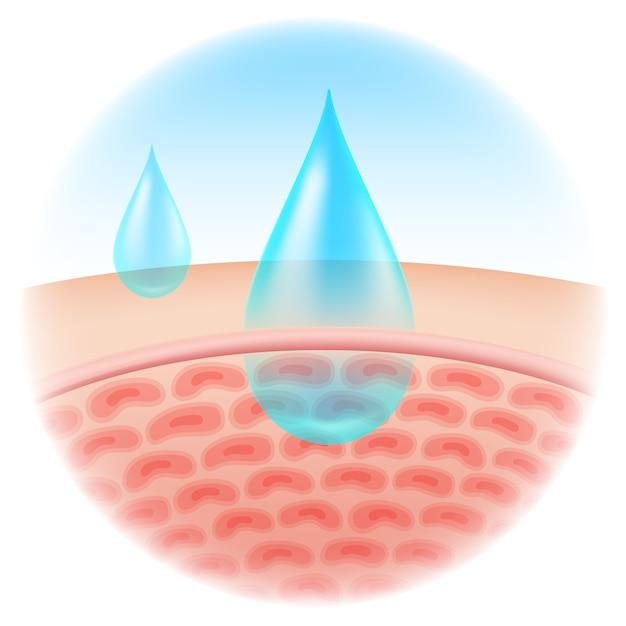The moisture content of aggregates plays a crucial role in various construction processes, especially in concrete mix design. But what exactly is free moisture content? In simple terms, free moisture content refers to the water that can be easily removed from aggregates under natural or artificial drying conditions.
In this blog post, we’ll explore the importance of understanding and managing free moisture content in aggregates. We’ll also delve into related concepts like batch weight calculation, specific gravity, SSD condition, ASTM C127, and the ideal moisture state for aggregates. By the end of this article, you’ll have a solid understanding of free moisture content and its impact on construction materials.
So, if you’re ready to uncover the mysteries of free moisture content and enhance your knowledge in construction practices, let’s dive in!

What is the Free Moisture Content
Understanding the Secret Life of Moisture in Your Materials
Moisture is everywhere – it’s in the air, in our drinks, and sometimes, even in our materials. But what is this mysterious “free moisture content” that keeps popping up in conversations? Let’s dive into the wonderful world of moisture and unravel the secrets it holds!
The Lowdown on Free Moisture Content
Free moisture content refers to the amount of water present in a material that can be easily extracted or evaporated. It’s like that clingy friend who just won’t leave your side – always ready to escape at the slightest provocation. To determine the free moisture content, you need to subtract the water content that is chemically bound to the material from the total moisture content.
Water, the Sneaky Intruder
Imagine this: your material is a cozy home, and free moisture is the uninvited guest that barges in unannounced. Free moisture content is particularly important to know because it influences the behavior of materials like soil, wood, and concrete. It can affect their strength, stability, and durability. So, it’s crucial to understand its sneaky presence and keep it in check.
The Science Behind It
Now, don’t worry, I won’t bore you with complex equations and scientific jargon. Let’s keep it simple! The free moisture content is expressed as a percentage, with the formula:
Free Moisture Content (%) = (Weight of Free Water / Oven-dried Weight of Material) × 100.
We dry the material in an oven to remove all the moisture, then weigh it. Next, we add some water to the material and weigh it again. The difference between the two weights gives us the weight of the free water. By dividing it by the oven-dried weight and multiplying by 100, we get the free moisture content.
The Impact on Different Materials
Different materials have different moisture-related quirks. For example:
Soil – The Playdough of Nature
Soil can be a fickle friend! Its free moisture content affects its consistency, compaction, and shear strength. Too much water, and you’ve got a muddy mess; too little, and it becomes as hard as a rock. Understanding the free moisture content helps us determine the optimum conditions for construction, agriculture, and beyond.
Wood – Moisture and Timber, Together Forever
Wood and water have an undeniable bond, but a high free moisture content in wood can cause problems like warping, shrinking, or even mold growth. By measuring the free moisture content, we can ensure that our lovely wooden furniture stays in good shape and doesn’t surprise us with any unwanted twists and turns.
Concrete – The Solid Side of Moisture
Concrete may seem solid, but it has a hidden secret – a love for moisture! Maintaining the right free moisture content during the curing process is crucial for strength and durability. Too dry, and it won’t set properly; too wet, and it might weaken or crack. Get the free moisture content just right, and you’ve built a solid foundation.
Wrapping Up the Moisture Adventure
And there you have it – a glimpse into the captivating world of free moisture content. We’ve learned that moisture in materials can be a friend or a foe, depending on its behavior. By understanding and managing the free moisture content, we can ensure the longevity and reliability of our materials. So, next time you encounter moisture in your materials, remember to ask the all-important question: “Are you free moisture content?”

FAQ: What is Free Moisture Content
How do you calculate batch weight
Batch weight is calculated by adding the weights of all the individual components in a mixture. For example, in concrete production, the batch weight includes the weights of cement, aggregates, water, and any other additives. This calculation ensures that the proportions of each component are accurate, resulting in a well-balanced mixture.
Why are aggregates considered as SSD condition in mix design
Aggregates are considered to be in a saturated surface dry (SSD) condition in mix design because it mimics the condition where the aggregates neither absorb water from nor contribute excess water to the mix. This allows for more accurate measurement and control of water content, ensuring consistent and reliable results.
What is specific gravity and how is it calculated
Specific gravity is the ratio of the density of a substance compared to the density of water. In the context of aggregates, it is a measure of the relative density of the material. The specific gravity of aggregates is typically calculated by dividing the weight of a given volume of material by the weight of an equal volume of water.
What is ASTM C127
ASTM C127 is a standard test method used to determine the specific gravity and absorption of coarse aggregates. This test provides crucial information about the quality and characteristics of the aggregates, helping engineers and contractors make informed decisions in mix design and construction.
What is the ideal aggregate moisture state
The ideal aggregate moisture state is the balance between too wet and too dry. It refers to the moisture content at which the aggregates are neither in excess of free moisture nor excessively dry. Achieving this state is crucial in ensuring the proper workability and strength of the resulting mixture.
What is free moisture content
Free moisture content refers to the amount of moisture that is readily available and not absorbed by the aggregates. It plays a significant role in determining the overall water-cement ratio and affects the workability and strength of the mixture. Controlling and adjusting the free moisture content is essential in achieving desired concrete properties.
What is SSD specific gravity
SSD specific gravity (Saturated Surface Dry specific gravity) is the specific gravity of aggregates when they are in a saturated surface dry condition. It takes into account the weight of both the solid material and the absorbed water, providing a more accurate measure of the aggregate’s density.
What are the 4 major moisture conditions for aggregates
The four major moisture conditions for aggregates are:
- Oven dry: The aggregates are completely dried out by heating in an oven.
- Air dry: The aggregates have been exposed to air and have naturally dried, but still contain some residual moisture.
- SSD (Saturated Surface Dry): The aggregates have been soaked in water and then allowed to drain until the surface appears dry.
- Wet: The aggregates contain excess moisture and have not yet reached SSD condition.
What is critical moisture content
Critical moisture content refers to the point at which the aggregates have absorbed the maximum amount of moisture and are in a fully saturated state. Beyond this point, any additional moisture will not be absorbed by the aggregates, leading to excess water in the mix and potentially compromising the performance of the concrete.
What is SSD in waterproofing
In waterproofing, SSD (Saturated Surface Dry) refers to the moisture condition of the substrate on which the waterproofing membrane is to be applied. It indicates that the surface is damp but doesn’t have any visible water pooling. Ensuring an SSD condition is essential to promote proper adhesion and the long-term effectiveness of the waterproofing system.
How do you calculate the absorption of concrete
To calculate the absorption of concrete, the following formula can be used:
Absorption = [(Wet weight – Oven dry weight) / Oven dry weight] x 100%
This calculation determines the percentage of water absorbed by the concrete, providing valuable information about its porosity and potential durability. It is an important factor to consider in mix design and understanding the behavior of concrete in different environments.
Remember, understanding the concepts of moisture content and its impact on mix design and construction is vital in producing high-quality concrete that meets the desired specifications. So, next time you’re dealing with concrete, keep these FAQs in mind and ensure your moisture content is in the right state for success.
